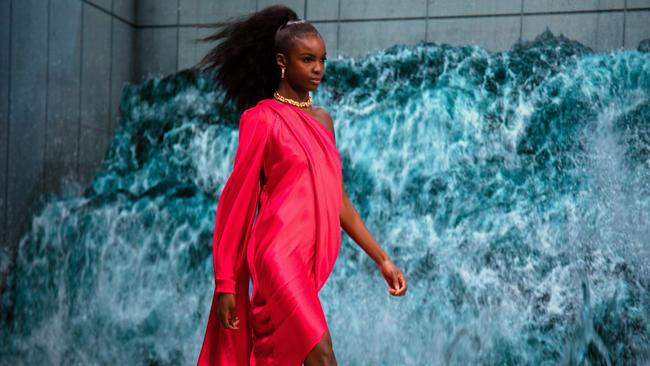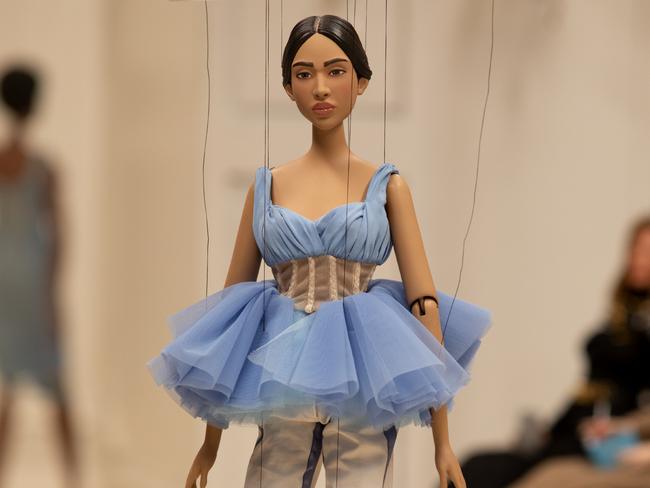From New York to Paris, Covid-19 forces a rethink on how fashion works
This year’s COVID-compromised fashion season proves it’s time for a dramatic rethink in the way big shows are staged

Suffice to say the spring 2021 show season, which finished on Tuesday in Paris, was quite the strangest of seasons. When I say finished “in Paris”, more than two-thirds of the shows were, of course, online only, so the city wasn’t really the main focus — although its gritty graffitied streets and picturesque landmarks still provided excellent backdrops to a number of the films and photo stories that were offered up by brands.
The season ran — as it always does — from New York to London to Milan to Paris. The first two were purely digital executions, with some brands creating short films or catwalk-inspired content, while others offered up photo essays or interviews.
Milan seemed determined to remind us of the power of the runway, with a third of brands presenting catwalk shows. And Paris, as mentioned, still had a number of runway shows, although the fact they went ahead in the face of escalating cases of COVID-19 in the city seemed reckless.
The new normal
On the fashion, there was a certain casualisation to hand this season, which was hardly surprising given the year we have had, with designers grappling to stay afloat and stay relevant as economies crumbled thanks to the pandemic.
A case in point was Valentino’s collaboration with Levi’s — quite the departure, but something that many will put straight on to their wishlists.
Often brands stuck to their well-worn paths, especially those known for elevated and polished wardrobe staples, such as Max Mara, Hugo Boss, Salvatore Ferragamo and Tods. Others put their brand DNA into overdrive for a best-of approach. Remember Balmain’s peak-shouldered blazers of a decade ago? Well, they were back, this time peakier, and now in reflux-inducing acid neon.
Nostalgia played a big part this season. At the beginning, it seemed that the carefree, hedonistic 1970s were in favour, thanks to brands including Temperley London and Tom Ford. But at the finish line, the 1980s seemed to have taken over. Louis Vuitton, Chanel and Vivienne Westwood all included looks that were bright, bold and ready to roll.
Andreas Kronthaler for Westwood’s approach was mishmash in extremis; at Chloe, that layered look was a little less hectic, and very much how we might approach dressing right now, shopping our own wardrobes for interesting and slightly off-kilter ensembles.
Pandemic favourites snuck into many collections, notably hoodies and track pants, while shorts will also feature prominently next spring, either in pedal-pusher styles or rolled-cuff with a little volume.
Creative licence
With different approaches to showcasing collections, there was plenty of creativity on show from designers and houses. Jonathan Anderson again chose to deliver his collection for Loewe direct to reporters. His Show on a Wall arrived at this journalist’s front door; inside the huge cardboard box was a roll of wallpaper, brush and glue, scissors and a folio of huge posters of the collection. It was another fun, hands-on exercise from the designer, although with no spare wall at home to slap it onto, it was more a collector’s item in practice.
Ferragamo shot an eerie short film with I Am Love director Luca Guadagnino, and delivered an oculus headset on which to watch it; when watched at the scheduled time, the film then segued into the live catwalk show in Milan.
Many houses chose to deliver a catwalk experience on film. London-based Australians Ralph & Russo showed a pop-bright collection in front of LED screens of waves crashing behind, mixing both physical and digital elements within the format.
Louis Vuitton’s live show at the newly restored La Samaritaine department store seamlessly blended live active with 360-degree cameras and green screen technology to create what felt very futuristic when watching from home.
Prada’s much-anticipated debut from co-creative directors Miuccia Prada and Raf Simons included a box-like studio catwalk followed by a conversation between the two designers, with questions sourced via Instagram.

Moschino replaced its often bonkers catwalk shows with an equally bonkers marionette show. Its socially distanced front row had all the usual suspects — Anna Wintour, Edward Enninful, Hamish Bowles — albeit in doll form, while puppets paraded the clothes on the Parisian salon-style set.
Opportunity knocked
But there were bigger issues at play aside from the fashion on show. As the season progressed, fashion weeks seemed increasingly irrelevant, in the traditional sense, and an opportunity for real change was wasted.
When fashion weeks began, they were industry affairs, exclusively for buyers and media to preview the collections, which would drop six months later, when they would also appear in the magazines of the day.
Those days — and that last whiff of exclusivity — are long gone. COVID-19 has also thrown many issues within the fashion industry into stark relief, from supply chains and carbon footprints to seasonal alignment and the future of fashion shows. These issues have been widely reported since it started, with a number of big names — Giorgio Armani, Dries Van Noten and more — openly declaring that the industry needs to have a reset, and this is the moment to do it. Both designers took part in the season’s shows digitally, Armani with a TV special.
Oddly, while digital ruled this season, all of the weeks stuck to a traditional schedule, dropping content at scheduled times throughout the course of the week. That seemed like a hangover to tradition, especially when you’re catering to a global audience in multiple time zones. Why not drop all the digital shows at the same time — even at the beginning of each week — so that people can explore them at their leisure?
Australian mega brand Zimmermann usually shows on the New York Fashion Week schedule. Being grounded in Sydney all year, the team offered up a digital catwalk of sorts. It presented off any schedule, but coincided with NYFW.
The outcome? The house told The Australian that views of the digital film were up on both previous catwalk shows: a 17.4 per cent increase on last season (autumn 2020-21) and 51 per cent on the prior spring season. If that’s the response, is there even a need to show on an official schedule?

Given that brands are increasingly communicating directly to their consumers via social media, it makes perfect sense to put them front of mind in any activity that generates publicity, and therefore sales. Buyers can still do business behind closed doors months in advance, as can media with previews.
So why not show the collections when you can buy them? The “see now, buy now” concept has been around for some years now, but there is still resistance from the industry to make it the norm.
A handful of brands — Tommy Hilfiger is a prime example — have made the shift, adhering to their own schedules and creating one-off events to create customer excitement when the product is arriving in stores. This season, Missoni did make the move, showcasing instead of next season’s wares its new autumn 2020-21 collection arriving in stores now.
On that note, perhaps the final word should go to Angela Missoni.
“This is the right moment to break the mould and try something new,” Missoni said in a video presentation. “(For) many years did I think that the timing of the show, the purpose of the show has changed. The purpose of a show used to be to show the collection to the trade and to the press. But today … it goes immediately to the public, and it goes immediately to the final consumer. Then closer to the actual season we can build special communications, a project like a show or a campaign or a video … I think this is a much more effective way of working.”

To join the conversation, please log in. Don't have an account? Register
Join the conversation, you are commenting as Logout